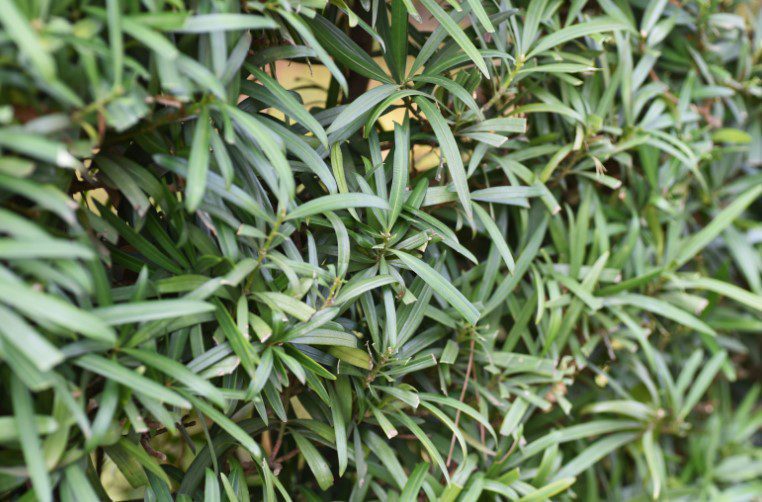Podocarpus Plants
Podocarpus plants are sometimes called Japanese yews. However, they are not Taxus genus members. Their needle-like leaves, growth form, and berries are very similar to those of the yew family.
These plants are also toxic, like yews. Podocarpus trees are beautiful and easy to care for in the garden.
Podocarpus tree care is minimal. It is an adaptable, tough plant that can survive in many environments.
Podocarpus Plants Details
Podocarpus can be grown in any climate, from mildly to moderately warm. Although it is not fussy about the lighting, it will grow faster if there is more light.
The plant, originally from Asia, is loved by landscapers for its versatility and the ease with which it can grow. The plant is tolerant of being pruned to any shape, and espaliering can be done if desired.
Once established, it is tolerant to air pollution, poor drainage, and compact soil. Podocarpus yew is a shrubby yew or Podocarpus macrophyllus. It can grow to be a large shrub to a small tree.
The plants can reach 8-10 feet (2-3 m.) high and have a pyramidal shape. They also have finely textured, thin evergreen leaves that are resistant to deer damage. These fruits have a lot of beauty.
The blue female cones turn into fleshy pink to purple elongated fruit. They can cause diarrhea and vomiting, particularly in children.
Podocarpus Tree Growing
Podocarpus yew-pine is hardy in United States Department of Agriculture Zones 8-10. Podocarpus trees can be cared for in a few weeks, but once they are established, it is not necessary to baby them.
It isn’t considered to be invasive, and there are no disease or pest issues. You can either make it a neat hedge or leave it alone to grow a conical shape.
Or you can train it like an espalier. This plant can be grown in almost any location, but it needs good drainage, moderate water, sun exposure for a minimum of six hours per day, and fertile soil.
This plant can tolerate most soil pH levels and is tolerant of moderate salt tolerance. Regular watering is essential for young Podocarpus plants. Early training is recommended if needed.
The surface roots can be protected by a light layer of organic mulch to prevent the growth of weeds.
Podocarpus Tree Care
This is one of the easiest plants to grow in the garden and should be used often. Magnesium sulfate can be used to treat magnesium deficiency.
You may also experience mild infestations of scale or mites. If the infestations are severe, use horticultural oil. Otherwise, make sure that your plant is well-watered and healthy to withstand any small pest invasions.
If the plant is not watered from above, mildew or mold can occur. To reduce the risk of this happening, use drip systems or soaker hoses.
Podocarpus will not be damaged if it is neglected for too long. Podocarpus is one of the most popular landscape plants due to its adaptability, hardiness, and range of site conditions.
Scientific name: Podocarpus macrophyllus.
Growth Habit: A small, upright evergreen shrub or tree that can grow to 25 feet high and 10 feet wide. They are straight with a prominent midrib and dark green below. They grow to 5 inches in length and 1/2 inch wide.
Light: Plant in full sunlight to light shade.
Water requirements: Tolerant to drought; water often when planting until roots are established in the soil. Then, the soil will be nourished by seasonal rains.
To encourage growth, apply a general fertilizer to your new plants for up to 3 years, once a month in March and June. The plants then get nutrients from nearby ground cover and shrub feedings, as well as decomposing mulches.
To avoid fruit drops, new shrubs are usually propagated from non-fruiting male plants. You can also start plants from seeds.
Culture is easy:
Hardiness: Hardy
Major problem: A blue-colored aphid feeds on the tips of plant shoots and causes severe damage. This causes sap and excreta to build upon the leaf surfaces, encouraging sooty mold fungus growth. As needed, spray natural oils to control pests.
Pruning: Plantings are often trimmed to form an upright, narrow hedge. To maintain a dense, compact growth habit, shearing is usually required when new shoots exceed 6 inches in length. Tree forms should be pruned to maintain their boundaries.
Uses: For narrow or shaded sites, plants can be trained to form very upright shapes approximately a foot in width. With minimal pruning, trees can form dense barriers. You can use backdrops to plant your plants.
The female plants open tiny, inconspicuous blossoms each spring. Male plants produce yellow catkin-type, 1-inch-long blooms that aren’t showy.
In summer, the berry-like fruits of the female flowers turn purple when they are ripe to provide food for wildlife.
Florida native: No























